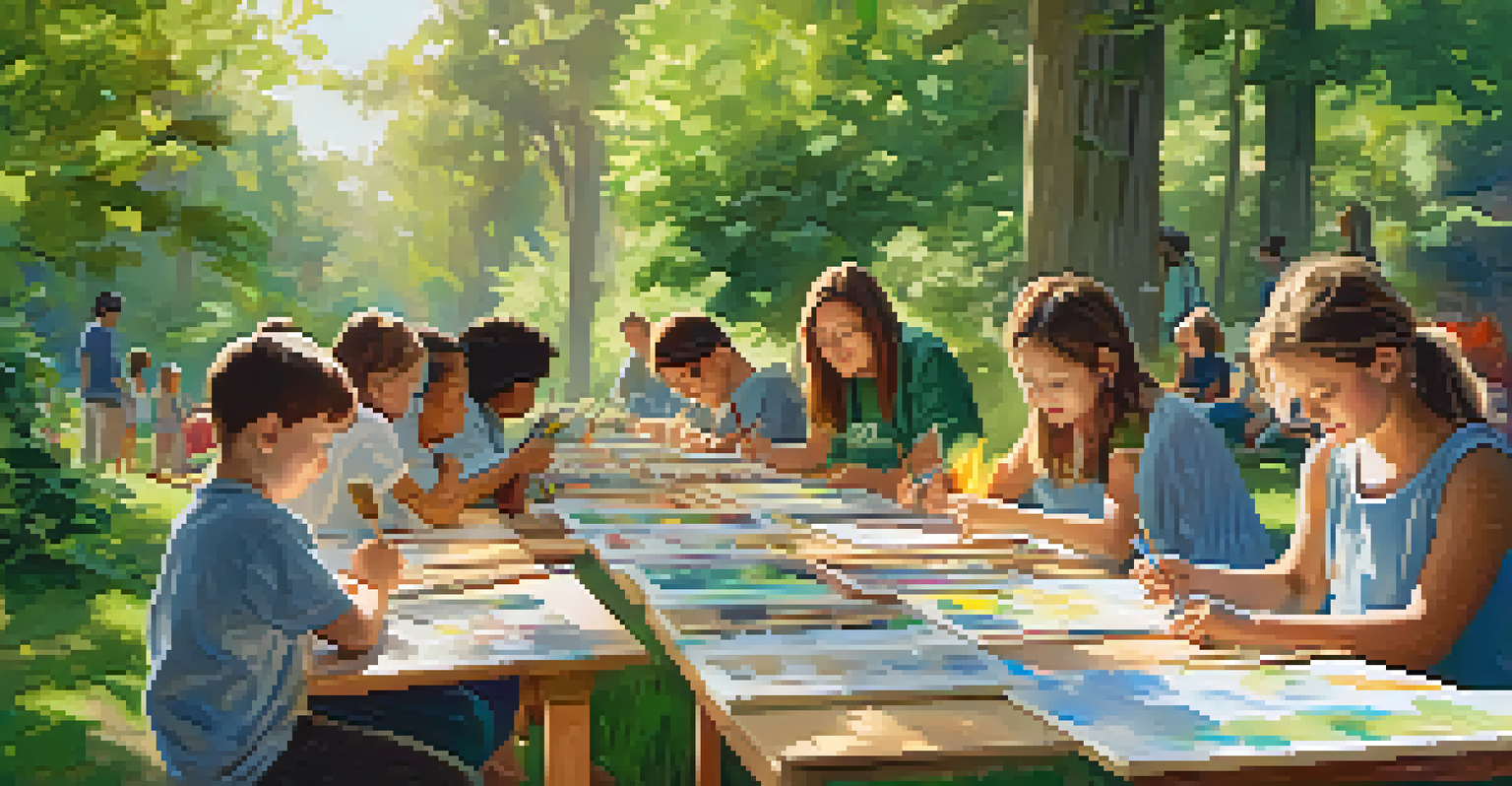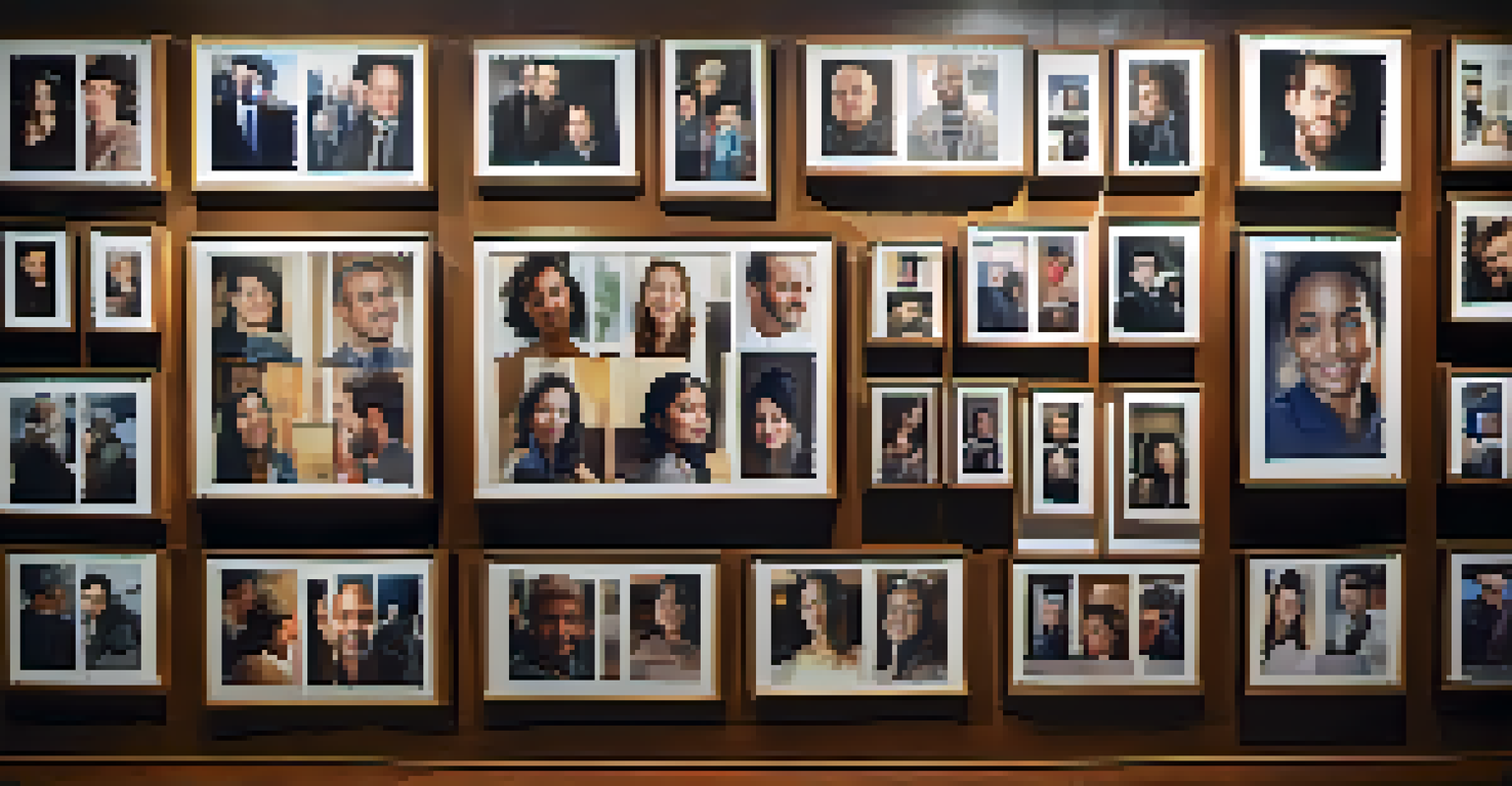Community Art Projects: Engaging Diverse Populations

What Are Community Art Projects and Their Purpose?
Community art projects are collaborative initiatives that invite local residents to participate in the creative process. These projects often aim to highlight cultural diversity, address social issues, and foster a sense of belonging among participants. By bringing together people from various backgrounds, they create a platform for shared experiences and collective expression.
Art is not what you see, but what you make others see.
At their core, these projects are about more than just creating art; they build connections between individuals and their communities. Whether it’s a mural, a sculpture, or a performance, the art serves as a reflection of the community’s identity and values. It becomes a conversation starter, helping to bridge gaps and cultivate understanding.
Moreover, community art projects often empower participants by giving them a voice in the artistic narrative. When individuals collaborate on a creative endeavor, they not only contribute their unique perspectives but also gain confidence and a sense of ownership over the final product.
The Role of Inclusivity in Community Art Projects
Inclusivity is a cornerstone of successful community art projects. By actively engaging diverse populations, these initiatives ensure that a wide range of voices and experiences are represented. This inclusivity enriches the creative process, leading to artwork that resonates with a broader audience.

When people from different backgrounds come together, they bring distinct stories and cultural influences that can transform a project. For instance, a community mural might incorporate symbols and colors that reflect various heritages, making it a tapestry of shared identities. This not only beautifies public spaces but also fosters pride among community members.
Community Art Builds Connections
Community art projects create shared experiences that foster relationships and a sense of belonging among participants.
Furthermore, inclusivity in art projects can break down stereotypes and challenge societal norms. As participants collaborate, they often find common ground, enabling them to see each other beyond labels and categories. This transformation can create lasting relationships and catalyze social change within the community.
Examples of Successful Community Art Projects
One notable example is the 'Inside Out Project,' which began as a way to give people a platform to share their stories through large-scale photographic portraits. This global initiative has inspired communities worldwide to showcase their diversity and individuality, making powerful statements about identity and belonging. Each portrait is a testament to the unique narratives that exist within a community.
Creativity is intelligence having fun.
Another inspiring case is the 'Mural Arts Program' in Philadelphia, which has transformed vacant walls into vibrant canvases that tell the stories of local neighborhoods. By involving residents in the design and execution, the project not only beautifies the city but also strengthens community bonds and fosters civic pride.
These examples illustrate how art can be a catalyst for social change, inviting dialogue and reflection. They demonstrate that when communities come together to create, the impact can be far-reaching, influencing perceptions and inspiring future generations.
How Community Art Projects Foster Connection
Art has an incredible power to connect people, and community art projects harness this ability beautifully. By collaborating on a shared vision, participants develop relationships that transcend their differences. This sense of connection can lead to a more cohesive community, where individuals feel valued and included.
When people come together to create, they often share laughter, stories, and experiences that deepen their bonds. This shared journey can break down barriers and cultivate empathy, as participants learn to appreciate one another's perspectives. The result is a stronger, more united community that thrives on collaboration.
Inclusivity Enhances Creative Process
Engaging diverse populations in art projects ensures a wide range of voices are heard, enriching the artwork and community identity.
Moreover, the art created through these projects often becomes a focal point for community gatherings and celebrations. It provides a space for dialogue and reflection, inviting even those who may not have participated to engage with the work and the stories behind it.
Challenges Faced in Community Art Projects
While community art projects can be incredibly rewarding, they also come with their own set of challenges. One common hurdle is securing funding and resources, which can limit the scope of a project. Many organizers must get creative in finding ways to finance their initiatives, often relying on grants, donations, or community support.
Additionally, balancing diverse perspectives can be tricky. With so many voices involved, it’s essential for project leaders to facilitate open communication and ensure that everyone feels heard. This process requires sensitivity and adaptability to navigate potential conflicts or misunderstandings that may arise.
Lastly, measuring the success and impact of these projects can be subjective. While some may focus on the aesthetic outcome, others might prioritize community engagement or social change. Establishing clear goals and metrics from the outset can help guide the project and provide valuable insights for future initiatives.
The Importance of Collaboration in Community Art
Collaboration is the heartbeat of community art projects. When individuals from various backgrounds work together, they bring unique skills and perspectives to the table, resulting in richer, more dynamic artwork. This spirit of teamwork not only enhances the creative process but also fosters a sense of camaraderie among participants.
For example, an art project might involve local artists, school children, and community leaders, each contributing their talents and insights. This collaborative environment can lead to innovative ideas and unexpected solutions, making the final artwork a true reflection of the community’s collective creativity.
Collaboration Drives Innovation
Working together in community art projects brings unique skills and ideas, resulting in dynamic art that reflects collective creativity.
Moreover, collaboration helps build networks and connections that extend beyond the project itself. Participants often form lasting relationships that can lead to future collaborations, strengthening the fabric of the community and promoting ongoing artistic endeavors.
Looking Ahead: The Future of Community Art Projects
As we look to the future, community art projects are poised to play an even more significant role in fostering engagement across diverse populations. With the rise of digital technology, there's potential for virtual collaborations that can connect communities worldwide, expanding the reach and impact of these initiatives.
Additionally, as social issues continue to emerge, community art can serve as a powerful tool for advocacy and awareness. By addressing pressing topics through creative expression, artists and participants can amplify their voices and inspire action within their communities.

Ultimately, the future of community art projects lies in their ability to adapt and evolve alongside societal changes. By embracing new technologies and approaches, these initiatives can continue to unite diverse populations, creating spaces for dialogue, understanding, and connection.